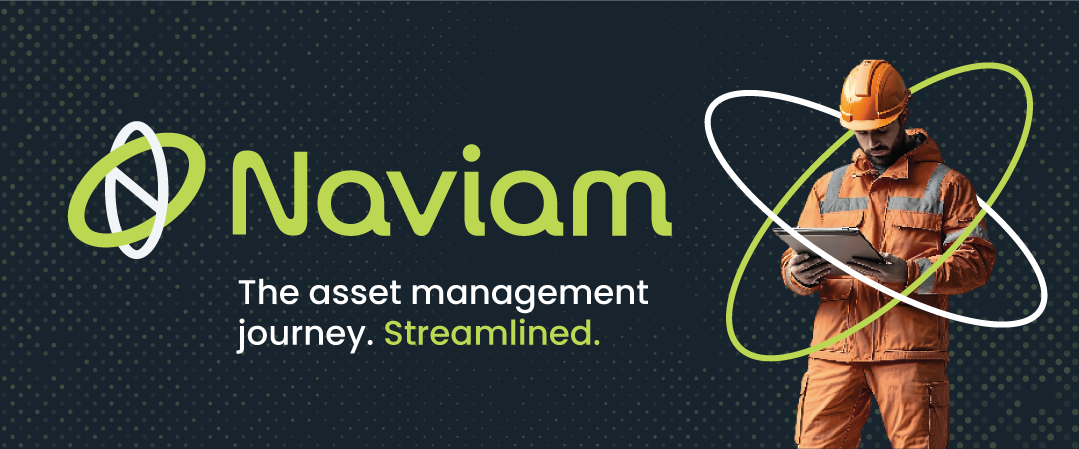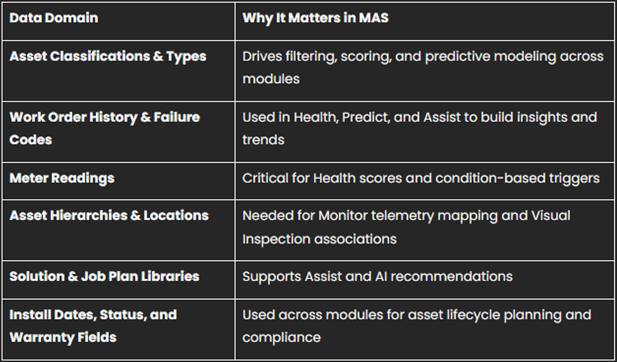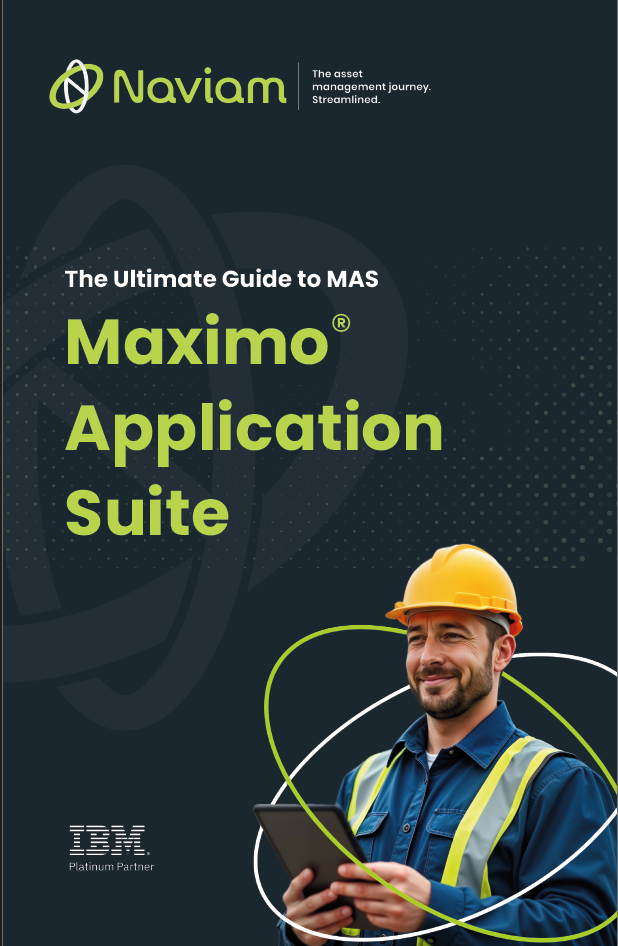
Resources
Don’t Move the Mess: Cleaning Legacy Data Before Your Move to MAS
Erin Pierce
October 8, 2025


Modernizing your enterprise asset management system by adopting IBM Maximo Application Suite (MAS) is a significant opportunity to enhance reliability, reduce costs, and enable predictive insights across your operations. MAS introduces modular applications like Health, Monitor, Predict, Visual Inspection, and Assist, which extend far beyond traditional work and asset management.
But these advanced capabilities come with a prerequisite that’s often underestimated: clean, structured, and reliable data.
While data integrity has always been important in Maximo, the transition to MAS, especially as you expand into modular applications, makes it critical. Modular services and APIs are brittle when faced with inconsistent values or broken relationships.
Poor data quality doesn’t just create noise; it undermines the logic, learning models, and automation that MAS is designed to deliver. Overall, your investment in a modern asset management system becomes diluted and difficult to manage.
When organizations plan for MAS, most efforts focus on the technical aspects of deployment: licensing, infrastructure, containerization, integrations. But MAS is also a data-driven suite. Its success depends on the quality, completeness, and consistency of the data it ingests.
As you look ahead to enabling modules beyond MAS Manage, your ability to gain value from the suite will hinge on how well your data supports these applications.
All MAS applications consume and contribute to a shared data layer. That shared architecture is powerful, but it also means that gaps or inconsistencies in your data ripple across the suite.
Let’s look at how key MAS modules depend on core data domains:
Calculates asset health scores using failure history, meter readings, and maintenance patterns. If records are incomplete or poorly classified, health indexes become unreliable.
Builds AI models to detect early failure signs based on historical trends and sensor data. Inconsistent or sparse history significantly reduces model accuracy.
Connects AI-based image analysis to specific asset records and parts. Without clear asset references and document relationships, image labeling and defect identification fall apart.
Ingests real-time telemetry and maps it to known assets and parameters. Disorganized asset hierarchies or unmapped devices lead to alert noise and monitoring blind spots.
Surfaces AI-guided recommendations using historical work data. Poorly documented work orders and solution records weaken the assistant’s ability to support technicians effectively.
While modular apps raise the bar, data quality is no less important in Manage. Core operational processes like preventive maintenance scheduling, asset costing, inventory accuracy, and regulatory compliance also rely on structured, trustworthy data.
Even within Manage, poor data leads to:
As you migrate to MAS, you have a valuable opportunity to improve your data before it becomes deeply embedded in new workflows, automations, and AI models.
Here are some key areas to focus on:

You don’t need to clean everything at once. A phased, prioritized approach aligned with your MAS rollout roadmap is both manageable and effective.
Start by assessing where data gaps and inconsistencies exist. Look at completeness, duplication, referential integrity, and field usage across your most important asset classes.
Establish agreed standards for required fields, classification structures, naming conventions, and value ranges. These rules ensure future consistency.
Choose a site, asset category, or region to test your rules. Validate results with stakeholders before scaling.
Apply rules to broader datasets. Document changes, track transformations, and load cleaned data into a staging environment for testing and UAT.
Choosing to move to MAS is an important step, but it’s only the beginning of your asset management transformation. The real power of MAS lies in enabling its full suite of applications like AI, automation, insights, and intelligent assistance, all of which depend on your data.
With MAS, you are setting the stage for automated insights, scalable processing, and integration-driven workflows.
Naviam Cloud provides:
Naviam also offers data cleanup projects (MODS) at an additional cost for IT professionals looking to enhance the quality of their data before moving to MAS. Clean data complements Naviam Cloud, not because the cloud “requires” it, but because clean data helps maximize the return on your investment in MAS functionality. Cloud enables flexibility. Data quality enables value.
To align your data cleanup with cloud-readiness:
Treat data quality not as a cleanup task, but as a strategic enabler. Align it with your roadmap. Resource it like a critical initiative. And ensure that the system you’re building today can support the operational and financial decisions you’ll make tomorrow.
Discover everything you need to know to modernize your asset management strategy.
Inside, you’ll learn:


ActiveG, BPD Zenith, EAM Swiss, InterPro Solutions, Lexco, Peacock Engineering, Projetech, Sharptree, and ZNAPZ have united under one brand: Naviam.
You’ll be redirected to the most relevant page at Naviam.io in a few seconds — or you can
go now.